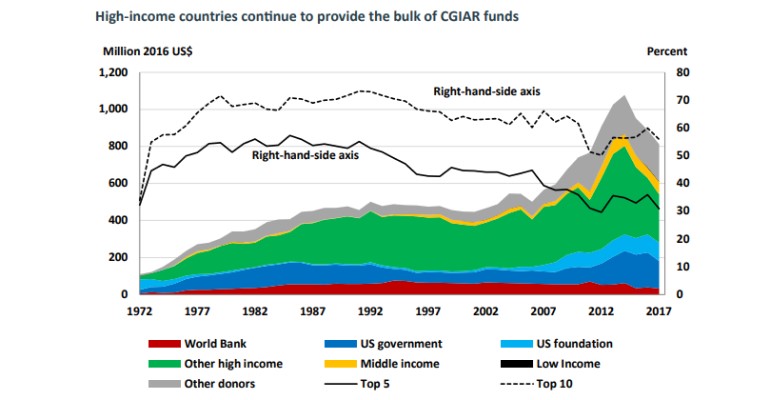SoAR said report solidifies continued need for increased investment in agricultural research across the globe.
October 16, 2020

CGIAR investments of roughly $60 billion in present value terms has generated a benefit-cost ratio of 10 to 1 over the past five decades, according to a new report released by the Supporters of Agricultural Research (SoAR) Foundations. The report - The Payoff to Investing in CGIAR Research - was coauthored by Julian M. Alston, University of California, Davis; Philip G. Pardey, University of Minnesota; and Xudong Rao, North Dakota State University today.
Formerly called the Consultative Group on International Agricultural Research, CGIAR is the world’s largest global agricultural research network.
“This work by esteemed economists exemplifies the continued need for increased investment in agricultural research across the globe,” said Thomas Grumbly, president of SoAR. “Farmers everywhere need new innovations to be able to adapt to the effects of climate change, while still feeding their communities and the world.”
In the 1970s and 1980s, funding for agricultural R&D by high-income countries grew rapidly, and these countries provided the bulk of funding for the CGIAR. In recent decades, high-income countries have scaled back their support for both national public agricultural R&D and international agricultural research. In the context of rising global investments in agricultural R&D, total funding for the CGIAR peaked at over $1 billion (2016 dollar values) in 2014 after a surge in response to the global food crisis. Since 2014, total inflation-adjusted funding for the CGIAR fell rapidly to around $800 million in 2018.

Established in 1971, CGIAR comprises 15 research centers working under one CGIAR mandate to reduce poverty, enhance food and nutrition security, and improve natural resources. CGIAR’s early work included developing high-yielding wheat and rice varieties, which is credited with spurring the Green Revolution and saving a billion lives primarily in Asia where many people were on the brink of starvation. Today, CGIAR focuses on ending hunger by 2030 through science to transform food, land, and water systems in the climate crisis.
“Agricultural research is slow magic. Returns accrue over long periods—decades—and realizing the full potential from agricultural R&D requires far-sighted investments. It is also a cumulative endeavor, best done with steady and sustained investments,” the report notes.
A benefit-to-cost ratio (BCR) significantly greater than 1:1 indicates that governments would have profited society by doing more agricultural R&D, compared with investment opportunities normally available to them. “A BCR of 10:1 indicates that agricultural R&D was clearly more profitable than almost any other government investment,” the report notes.
The report provides a strong economic investment case for funding partners as they consider future investments in international agriculture research and development, SoAR said. With a strong presence and long-term partnerships in developing countries, CGIAR is uniquely positioned to further create and develop needed innovations. Additional investments in CGIAR research would continue to yield dramatic returns on investment and benefits for poor communities, particularly in Africa and South Asia where smallholder farmers and local food systems are most vulnerable.
SoAR strongly encourages governments and foundations to accelerate their funding of CGIAR to strengthen smallholder agriculture and protect food systems for future generations.
You May Also Like


.png?width=300&auto=webp&quality=80&disable=upscale)
